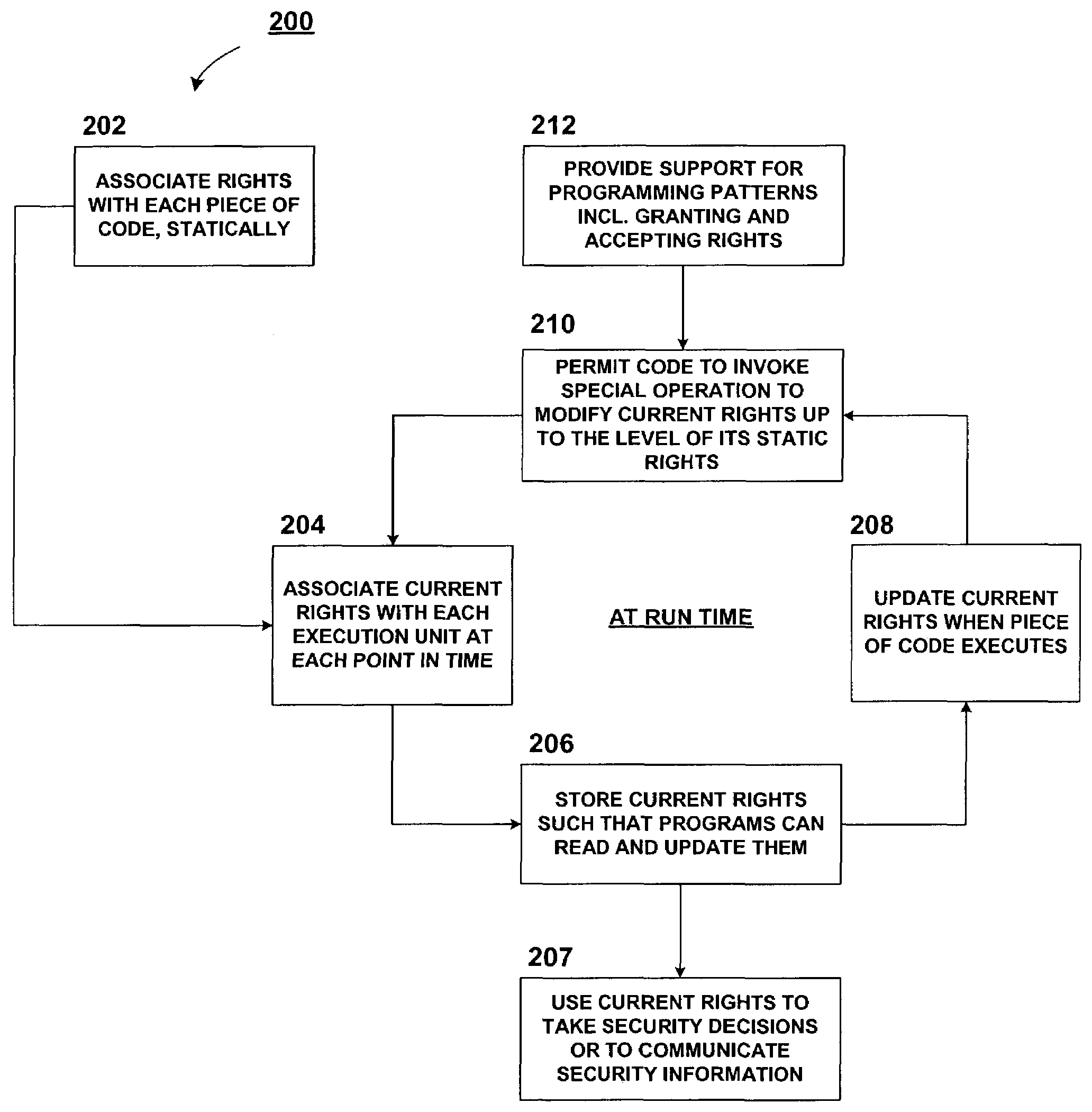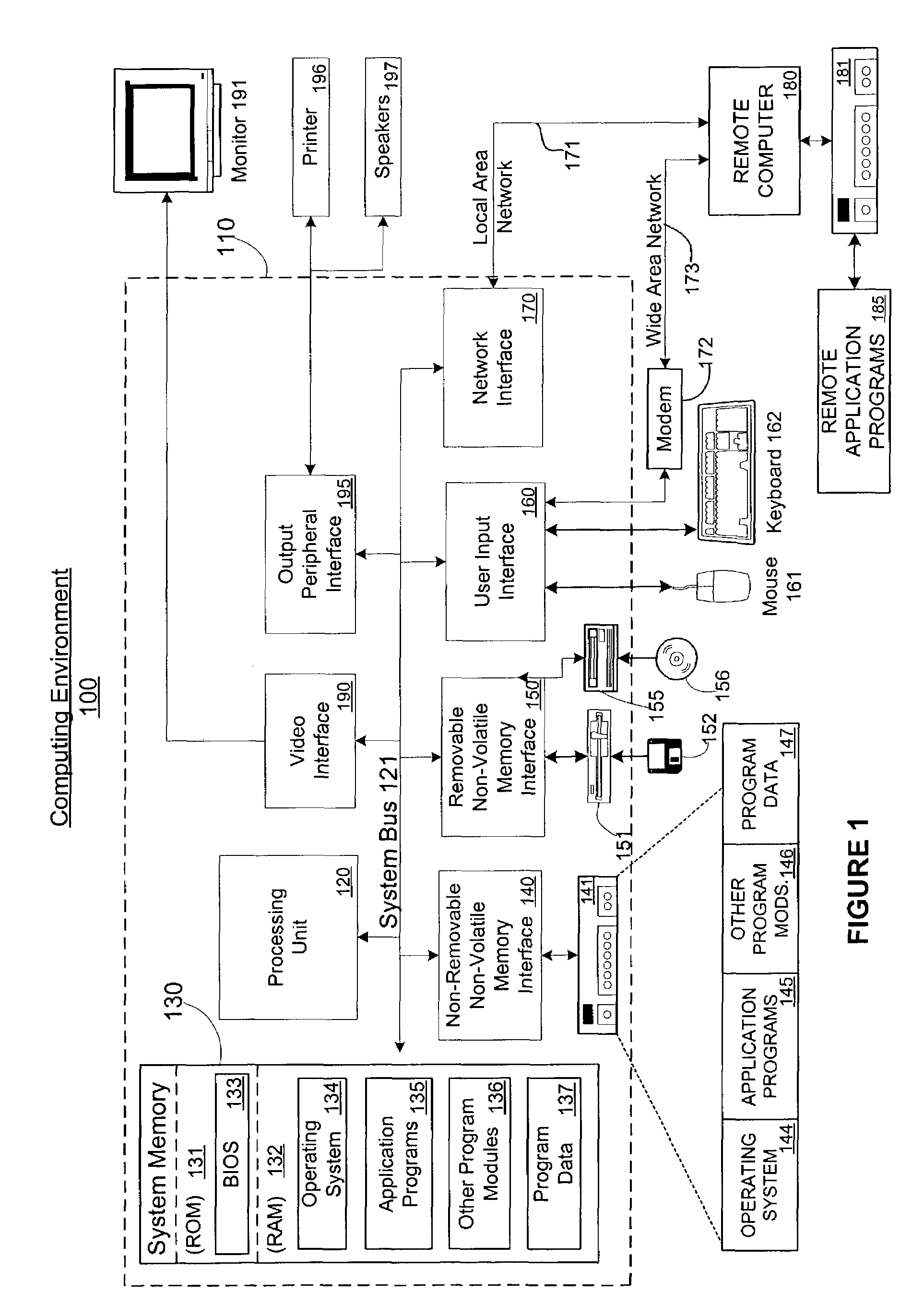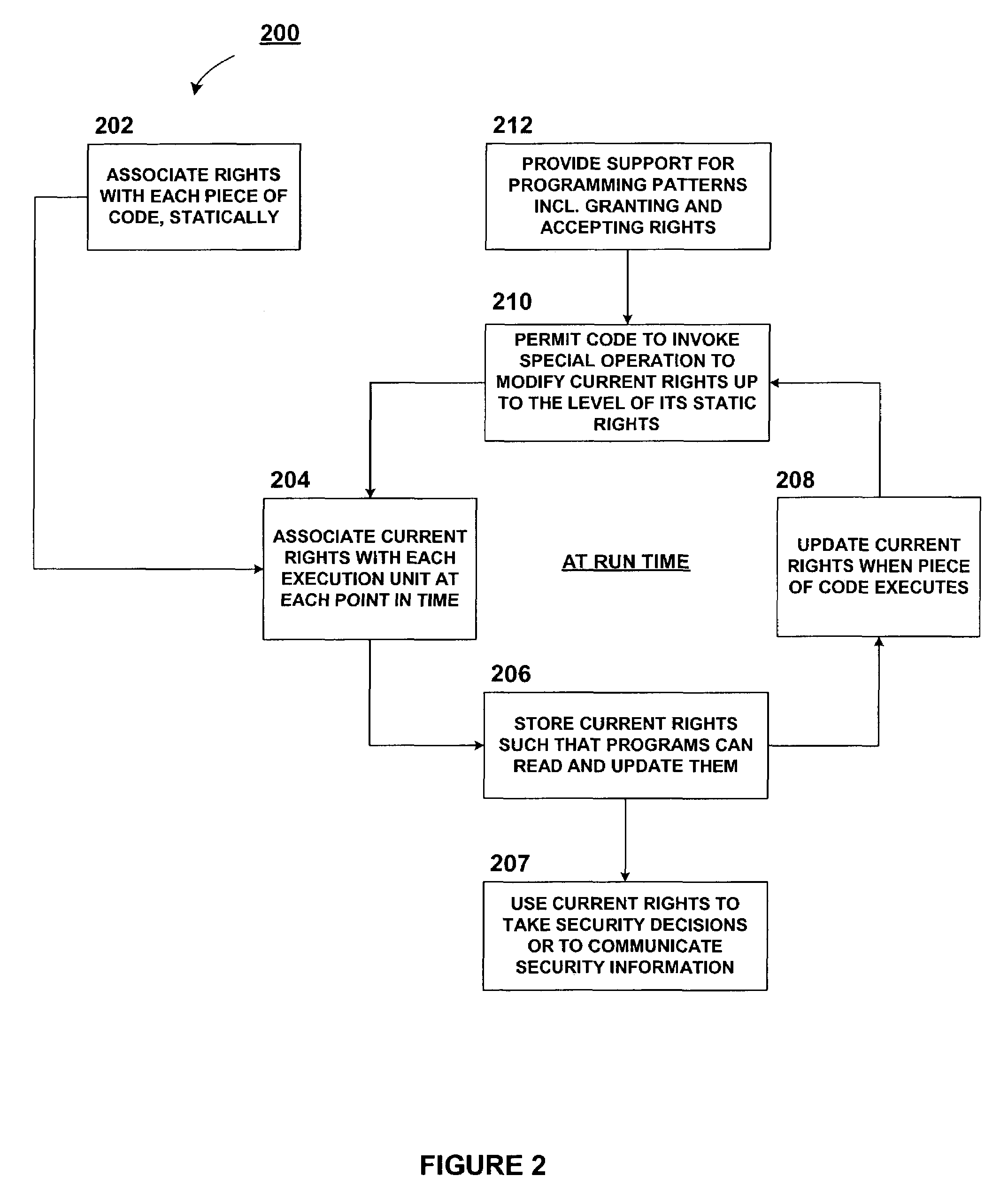History based rights computation for managed code
a managed code and history-based technology, applied in the field of computer systems and security, can solve the problems of difficult and impractical checking, difficult to manage permissions, and amplifications that are dangerous
- Summary
- Abstract
- Description
- Claims
- Application Information
AI Technical Summary
Benefits of technology
Problems solved by technology
Method used
Image
Examples
example 1
[0114]In the first example, some untrusted code (such as an applet) calls some trusted code (such as a library) that in turn performs a sensitive operation (such as deleting a file). For this example, the situation is much like with stack inspection. We mention our assumptions on the respective static permissions in comments:
[0115]
/ / Mostly untrusted: no FileIO permissionclass BadApplet {public static void Main( ) {Library.CleanUp(“.. / password”);}} / / Trusted: all FileIO permissionsclass NaiveLibrary {public static void CleanUp(string s) {System.IO.File.Delete(s);}}
[0116]The sensitive operation can be protected by requiring a permission (FileIO, in our example):
[0117]
/ / Within System.IO: all FileIO permissionsclass File {. . .public static void Delete(string s) {FileIO.Demand(s, . . .);Win32.Delete(s);}}[0118]Here, FileIO.Demand(s, . . . ) checks that the permission to write s is available. Our history-dependent mechanism keeps track of the untrusted caller to the library, and automa...
example 2
[0123]In the second example, conversely, some trusted code (such as a local application) calls untrusted code (such as a plug-in), then proceeds with its result. Unlike stack inspection, our mechanism still prevents the deletion of the file.
[0124]
/ / Trusted: all FileIO permissionsclass NaiveProgram {public static void Main( ) {string filename = PlugIn.Tempfile( );System.IO.File.Delete(filename);}} / / Mostly untrusted: no FileIO permissionclass BadPlugIn {public static string TempFile( ) {return “.. / password”;}} / / Within System.IO: all FileIO permissions, exactly as aboveclass File {. . .public static void Delete(string s) {FileIO.Demand(s, . . .);Win32.Delete(s);}}
[0125]Operationally, the situation is much as in the first example:[0126]Initially, the current permissions contain all the static permissions of NaiveProgram.[0127]When PlugIn.Tempfile is called, the current permissions are intersected with the static permissions of BadPlugIn.[0128]When BadPlugIn returns, and later in the ...
PUM
 Login to View More
Login to View More Abstract
Description
Claims
Application Information
 Login to View More
Login to View More - R&D
- Intellectual Property
- Life Sciences
- Materials
- Tech Scout
- Unparalleled Data Quality
- Higher Quality Content
- 60% Fewer Hallucinations
Browse by: Latest US Patents, China's latest patents, Technical Efficacy Thesaurus, Application Domain, Technology Topic, Popular Technical Reports.
© 2025 PatSnap. All rights reserved.Legal|Privacy policy|Modern Slavery Act Transparency Statement|Sitemap|About US| Contact US: help@patsnap.com



